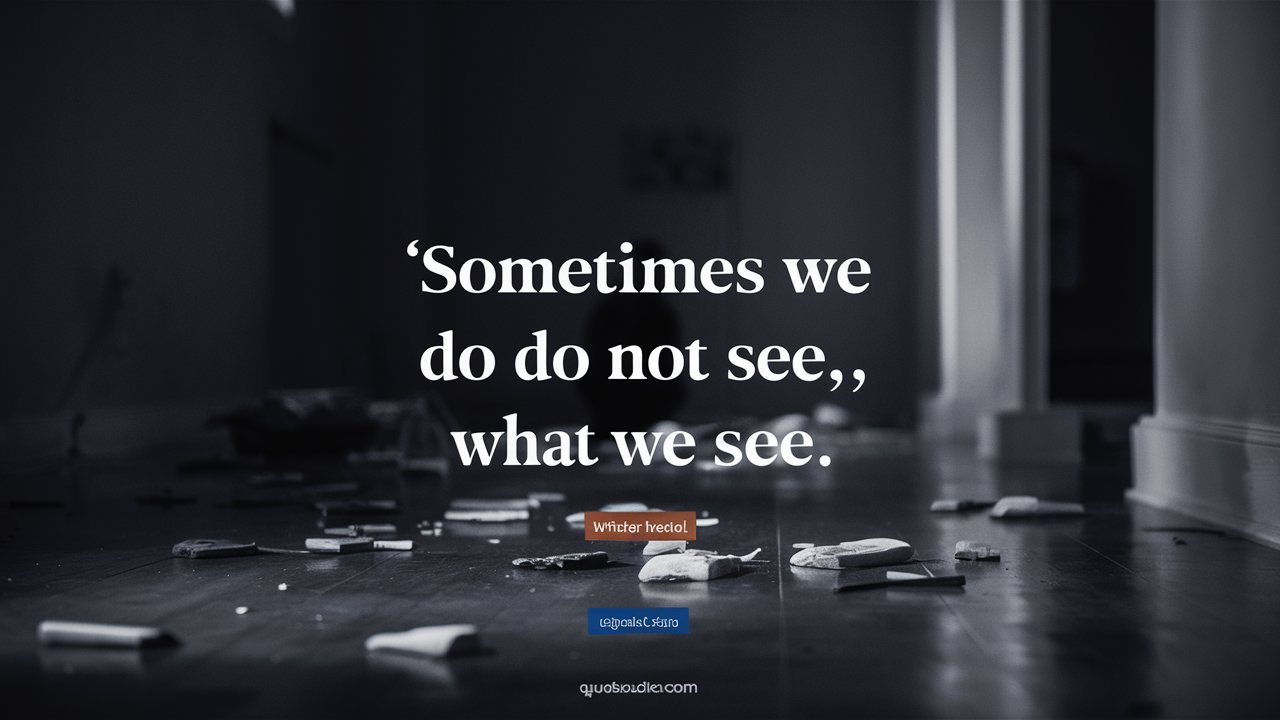8. Sometime we do not see, what we see. 2019

Sometime we do not see, what we see.
Introduction:
As humans, we rely heavily on our senses to interpret the world around us. We believe that what we see is what is there, and that our perceptions are accurate representations of reality. However, our perceptions can be influenced by a variety of factors, including our past experiences, cultural norms, and biases. This essay aims to explore the idea that sometimes we do not see what we see and argue that our perceptions can be flawed.
The Role of Perception in Interpretation:
Perception plays a crucial role in how we interpret the world around us. Our brains use sensory information to create a perception of reality, but this perception can be influenced by a variety of factors. For example, our past experiences can influence how we perceive things, as we may have developed preconceived notions about certain objects or situations based on past experiences. Similarly, cultural norms and values can influence how we perceive certain things, as they may have different meanings or associations in different cultures.
Biases can also play a role in how we perceive things. Confirmation bias, for example, is the tendency to seek out information that confirms our preexisting beliefs and to ignore information that contradicts them. This can lead to a skewed perception of reality, as we may only see what we want to see and ignore evidence to the contrary.
Illusions and Optical Illusions:
Illusions and optical illusions are examples of situations where we may not see what we think we see. An illusion is a distortion of the senses, where what is perceived differs from what is actually there. For example, the famous Müller-Lyer illusion, where two lines of equal length appear to be different lengths due to the addition of arrowheads on the ends, is a visual illusion that demonstrates how our perceptions can be influenced by context.
Optical illusions are another example of how our perceptions can be distorted. They are images that trick the eye and brain into seeing something that is not there or perceiving things in a different way. For example, the famous rotating snakes illusion, where a static image appears to be rotating, demonstrates how our brains can be easily fooled by visual information.
The Impact of Perception on Everyday Life:

Perception can have a significant impact on our everyday lives. Our perceptions influence how we make decisions, interact with others, and interpret events. For example, our perceptions of other people can influence how we interact with them, as we may make judgments or assumptions based on our preconceived notions or biases.
Similarly, our perceptions of events can influence how we interpret them. Confirmation bias, for example, can lead us to ignore evidence that contradicts our beliefs, leading to a skewed interpretation of events. This can lead to misunderstandings or conflicts with others who have different perceptions of the same events.
The Importance of Critical Thinking:
Critical thinking is an important tool for overcoming the limitations of perception. It allows us to evaluate information and arguments objectively and to challenge our preconceived notions and biases. By using critical thinking skills, we can learn to question our perceptions and to seek out evidence that contradicts our beliefs.
In addition, critical thinking allows us to evaluate the validity of arguments and evidence. It helps us to identify logical fallacies and to distinguish between valid and invalid arguments. By developing our critical thinking skills, we can become more informed and responsible citizens, capable of making rational decisions and participating in meaningful debates.
Conclusion:
In conclusion, sometimes we do not see what we see. Our perceptions can be influenced by a variety of factors, including our past experiences, cultural norms, and biases. Illusions and optical illusions demonstrate how our perceptions can be distorted, leading to a skewed interpretation of reality. Critical thinking is an important tool for overcoming the limitations of perception and for evaluating information and arguments objectively. By developing our critical thinking skills, we can become more informed and responsible citizens.
Visit: https://techinsightguru.com/